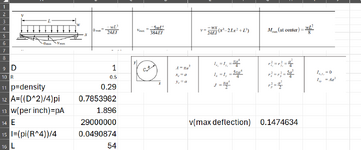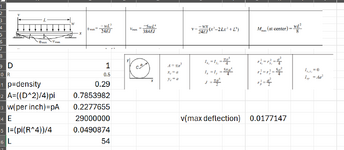I'm looking to measure the total runout of a very long shaft along the entire length. A 1" diameter shaft, 5' long, with datums 3" from each end, and a total runout requirement of .005".
The traditional method would be to put the datums on Vee-blocks and roll it then drag the dial indicator up and down the shaft. A shaft of this length/diameter/support is going to sag more than the total runout. So how do you measure the total runout using traditional hand tools?
My strategy is as follows; First, constrain the diameter through measurement using snap/mic/etc. Then spin the shaft on rollers taking circular readings along the length of the shaft. A bend in the shaft will show up as circular runout at that spot. TLDR; total runout is circular runout as long as the form (diameter) of the part is constrained.
Does this strategy make sense?
The traditional method would be to put the datums on Vee-blocks and roll it then drag the dial indicator up and down the shaft. A shaft of this length/diameter/support is going to sag more than the total runout. So how do you measure the total runout using traditional hand tools?
My strategy is as follows; First, constrain the diameter through measurement using snap/mic/etc. Then spin the shaft on rollers taking circular readings along the length of the shaft. A bend in the shaft will show up as circular runout at that spot. TLDR; total runout is circular runout as long as the form (diameter) of the part is constrained.
Does this strategy make sense?



